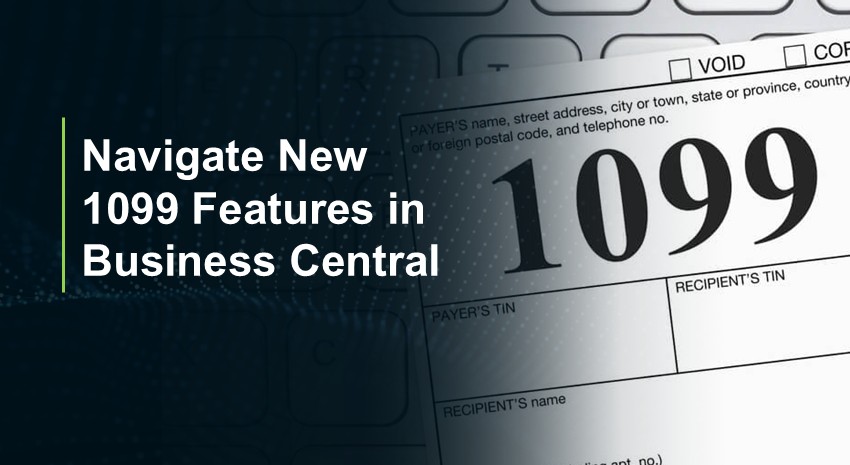New 1099 Features in Microsoft Dynamics 365 Business Central

Microsoft has rolled out a revamped 1099 experience in Dynamics 365 Business Central — designed to streamline year‑end tax reporting and boost compliance automation. In this recently published webinar, we walk you through every practical step, from enabling the new system to electronic IRS filing and updating legacy data.
Key topics covered in the webinar
- Enabling the new 1099 feature
You’ll need to activate the functionality via the Feature Management page. Early adoption is encouraged for testing and optimization before rolling it out widely. - Creating reporting periods
Set up IRS 1099 reporting periods through the IRS Reporting Periods control panel. Define relevant start and end dates, assign applicable form types (like MISC or NEC), and configure form boxes with the correct minimum reportable amounts. - Updating Vendor Cards
Vendors must be flagged as 1099-liable on their vendor cards in Business Central (see the Payments FastTab). You’ll choose a 1099 code, set vendor consent for e-form delivery (another reason to start early), specify email addresses for IRS communications, and note whether FATCA filing is required. - Emailing 1099s to vendors
Business Central supports emailing substitute 1099 forms directly to vendors – complete with customizable email subject lines and body content via the Email Content Setup. - Electronic IRS Submission
A major highlight is that Business Central now supports e-filing for IRS 1099 forms through magnetic media export or API-based integration, significantly boosting compliance and efficiency. - New and Enhanced Reports
The platform offers built-in reports like Vendor 1099 Information and Vendor 1099 Statistics, enabling a detailed review of 1099 amounts by vendor. You can generate forms by type (MISC, NEC, etc.), and regulatory updates (e.g., box changes) are handled through the “Update Form Boxes” action. - Adjustments to Historical Data
Be cautious—running the Update Form Boxes action may change the meaning of form boxes, preventing reporting for previous years. Ensure all prior-year data is finalized before updating.
Why this matters
The IRS Forms app ushers in a new era for 1099 reporting in Business Central.
- No more reliance on preprinted forms — digital substitute forms now replace manually ordered printouts.
- E‑filing is now essential — with IRS mandates, even smaller businesses must file electronically when submitting 10+ forms.
- Greater automation and resiliency — fewer manual steps, faster updates, and improved reliability for end-of-year workflows.
- Built for modern tax environments — reduces delays tied to IRS layout changes and supports better audit preparedness.
Contact ArcherPoint by Cherry Bekaert today for help preparing for the upcoming tax reporting season.
Trending Posts
Stay Informed
Choose Your Preferences
"*required" indicates required fields
